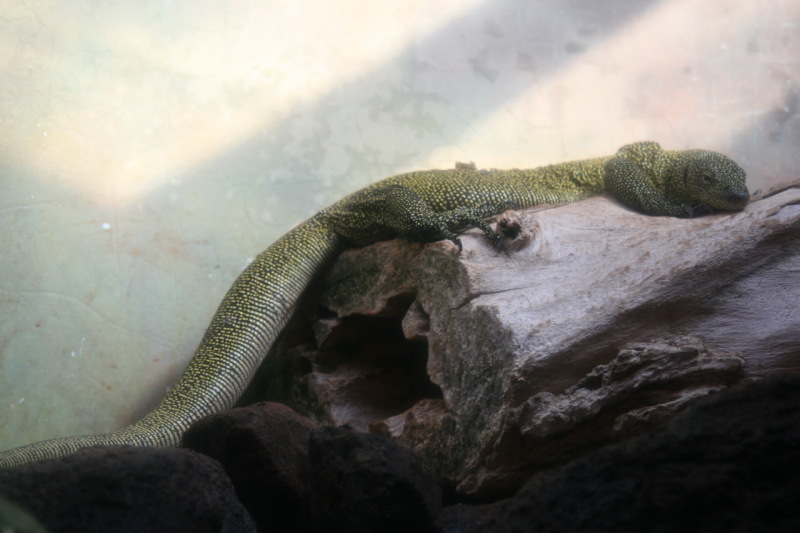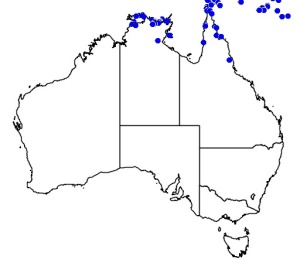Colours
Distinguishing features
The monitor's body is dark green or black in color and covered with golden-yellow spots, with light coloration on the top of its head and a solid, cream-colored belly lacking dark markings. It has a distinct dark purple tongue and serrated teeth. (Wikipedia)
Size
- Up to 120 cm (Length of specimen)
Synonyms
Distribution
Distribution and habitat preferences
The mangrove monitor's range extends throughout northern Australia, New Guinea, the Solomon Islands, the Marshall Islands, the Caroline Islands, and the Marianas Islands, where it inhabits damp forests near coastal rivers, mangroves, and permanent inland lakes. It also occurs on the Moluccan Islands of Morotai, Ternate, Halmahera, Obi, Buru, Ambon, Haruku, and Seram. Within this range of thousands of miles across hundreds of islands are large variations in size, pattern, and scalation. The monitors have also been introduced to Japan since the 1940s.
Diet
It is an opportunistic carnivore, feeding on the eggs of reptiles and birds, mollusks, rodents, insects, crabs, smaller lizards, fish, and carrion.
They are the only monitor capable of catching fish in deep water. In some parts of its range, it is known to eat juvenile crocodiles. (Wikipedia)



